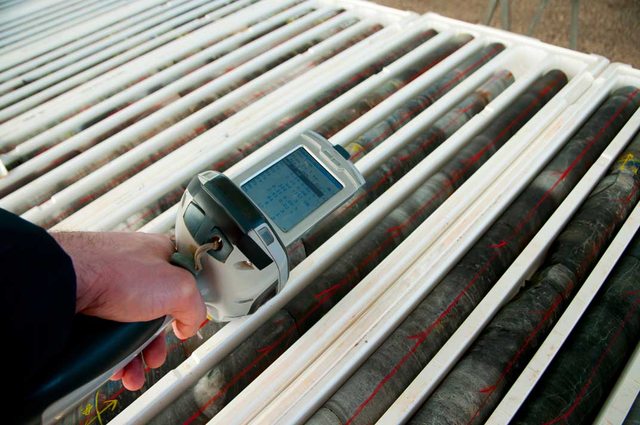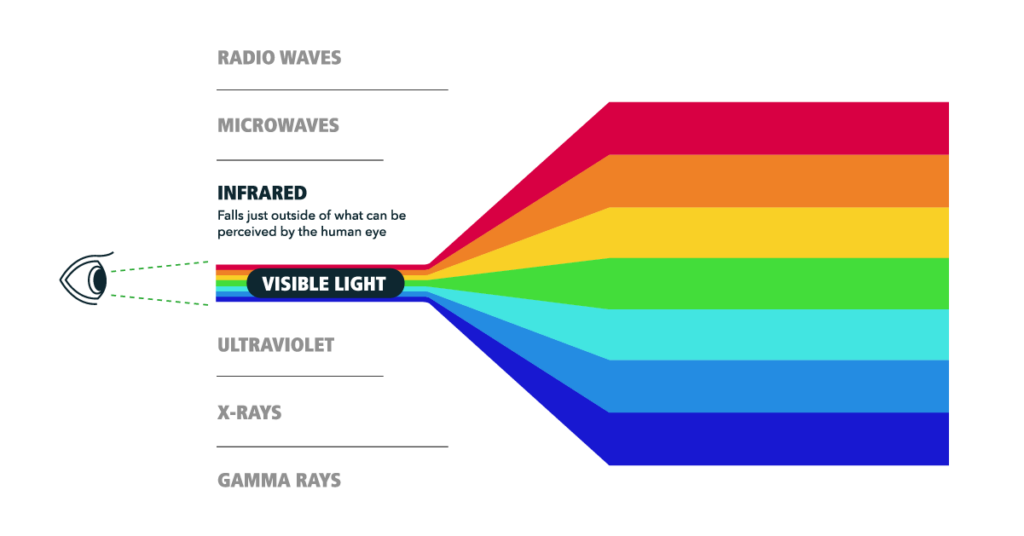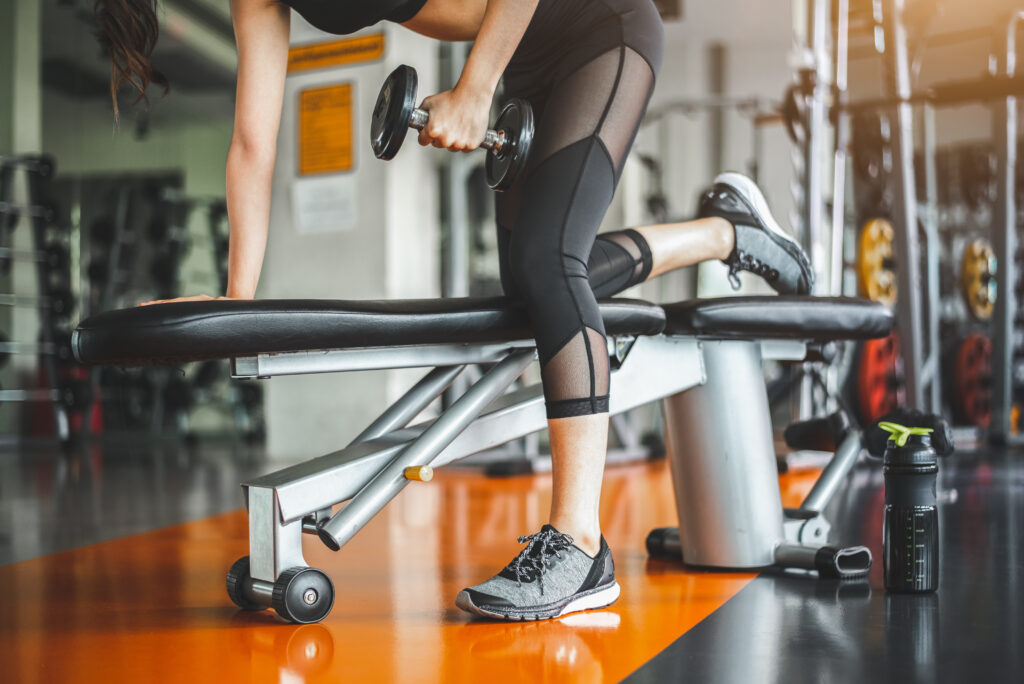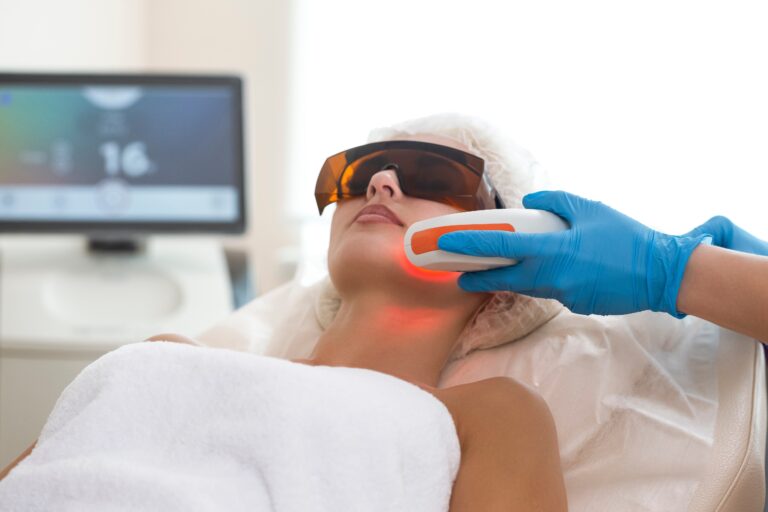
Introducing CELLIANT XRF Fabric Testing
May 01, 2025 – The pursuit of continual improvement has led us to adopt a powerful new method of analysis for CELLIANT-powered fabrics: X-Ray Fluorescence (XRF) Testing…

Biohacking refers to the practice of manipulating one’s biology through various means, including with technology, to enhance overall well-being. It’s a methodical approach to making lifestyle adjustments that precisely influence the body’s biological processes.
Infrared light can be utilized as a biohacking tool due to its ability to directly impact several key biomarkers and create measurable, physiological changes in the body. In this article, we’ll take a deep dive into the world of biomarkers, how they can be impacted by infrared light, and how the benefits of IR can help optimize sleep and performance.
Biological markers, also known as biomarkers, are substances that can be objectively measured and evaluated to reflect different biological processes happening in our body. They offer an array of information ranging from basic physiological metrics such as body temperature, to more intricate ones like VO2 max or anaerobic threshold.
Essentially, these markers serve as a clear lens into our body’s physiological systems, offering valuable insights into our health and performance potential. Biomarkers can be leveraged to better understand our various bodily functions, changes in our health, and how our body responds to external factors, such as infrared light therapy.
Whether it’s assessing the efficiency of our sleep or the strength of our grip, biomarkers provide tangible, quantifiable data that can be used to optimize our overall health and performance. By effectively measuring and monitoring these biomarkers, we can navigate our biological landscape, making informed decisions to boost our well-being and performance.
A single biomarker can provide a wealth of insight into a specific aspect of health or bodily function. Nevertheless, to fully comprehend an individual’s overall health, multiple biomarkers must be considered in unison. This is because biomarkers often influence and interrelate with each other – a change in one may result in changes in others. For instance, a decrease in sleep efficiency, an indicator of sleep quality, could lead to alterations in body temperature, a measure of thermoregulation, which could subsequently impact physical performance.
It’s similar to piecing together a complex jigsaw puzzle – each biomarker, or puzzle piece, adds a crucial component to the overall picture. The role each biomarker plays, both individually and collectively, helps to inform us about the complexities of our health and well–being. By studying multiple biomarkers concurrently, we can gain a more comprehensive, holistic understanding of health, beyond what any single biomarker can provide.
There are several key biomarkers associated with sleep, such as body temperature and sleep efficiency. These specific biomarkers act as navigational tools, helping us better understand our sleep patterns and quality. Sleep efficiency, for example, measures the percentage of time we spend asleep while in bed. A higher sleep efficiency indicates fewer awakenings during the night and better sleep quality.

Body temperature, on the other hand, is closely tied to our circadian rhythm, or internal biological clock. Our body temperature naturally fluctuates throughout the day, and these variations play a critical role in sleep regulation. Lower body temperatures in the evening signal the body that it’s time to sleep, while increasing temperatures in the morning serve as a natural alarm clock. Accordingly, it’s no surprise that people who struggle with being too hot at night often experience sleep interruptions. In fact, trying to rest at a temperature that is not ideal for sleep is one of the most common causes of sleep disturbances.
Performance is an essential facet of our overall health, and it is quantifiable through a host of specific biomarkers such as grip strength, VO2 max and the anaerobic threshold. Each of these markers gives us unique insights into our physical capabilities.

Grip strength, a direct measure of muscular strength, serves as an indicator of overall health status, and has even been shown to provide insight regarding one’s risk of cardiovascular disease. VO2, on the other hand, quantifies the amount of oxygen used during exercise, providing a measure of aerobic endurance and cardiovascular fitness. VO2 max, or maximal oxygen uptake, is the maximum amount of oxygen that an individual can utilize during intense exercise. The anaerobic threshold, conversely, marks the exercise intensity level at which lactic acid starts to accumulate in the blood faster than it can be removed, signaling the onset of muscle fatigue.
Together, these biomarkers offer a comprehensive picture of an individual’s physical performance, allowing us to understand, monitor and optimize our speed, strength and stamina. By tracking these biomarkers, we can measure our progress, set realistic goals, and tailor our health and wellness routines accordingly.

Infrared light therapy utilizes light waves beyond the visible spectrum to provide physiological benefits. You can get the benefits of infrared light in many ways, such as through infrared bio-responsive textiles that deliver health and wellness benefits straight from the fabric to the wearer or user.
CELLIANT®, a natural blend of bioceramic minerals that emit infrared light, is a leading IR textile technology that can be embedded into fibers and yarns or printed as a coating on fabrics. CELLIANT bio-responsive fabrics work by capturing the heat that your body naturally gives off, during rest and while active, and converting that heat into infrared energy. This IR energy is reflected back to the body where it can be absorbed into muscles and tissues.
Once absorbed into the body, infrared light can interact with various biomarkers, thus holding the potential to enhance health and well-being. CELLIANT-powered infrared textiles have been clinically demonstrated to increase blood flow and cellular oxygenation which, in turn, has a measurable impact on biological indicators of sleep and performance.
Body temperature, a biomarker of thermoregulation, is essential for establishing and maintaining healthy sleep patterns. Circulation plays a crucial role in thermoregulation, the process by which the body maintains its core temperature within a narrow range to support optimal physiological function.

Infrared light’s ability to increase local circulation and tissue oxygen levels offers benefits on the performance front, too. Infrared light has the potential to impact performance biomarkers, such as elevating VO2 max, helping delay the anaerobic threshold – thereby extending endurance – and improving grip strength.
There are several peer-reviewed published studies on CELLIANT fabrics that validate the performance benefits of infrared light.

In a CELLIANT clinical trial designed to examine whether infrared apparel affects oxygen consumption during exercise at intensities below an athlete’s anaerobic threshold, each subject participated in four randomized cycling tests. They were tested twice while wearing a full-body infrared garment and twice while wearing a similar control garment made from traditional materials.
We measured changes in participants’ VO2 in two ways. A breathing mask attached to a metabolic analysis cart monitored the volume of oxygen uptake, and blood tests taken at different stages of exercise monitored the amount of lactate buildup in the blood. Lactate increases with exercise intensity, so the blood tests established the intensity at which the participants were cycling and ensured they were below the anaerobic threshold.
By incorporating infrared products such as bedding and apparel infused with CELLIANT into a biohacking regimen, individuals can fine-tune their body’s responses, optimizing for better sleep and stronger performance. This application of infrared light represents the intersection of textile technology and biology, empowering individuals to take an active role in their health.
As wellness continues to have significant influence on our lifestyles and decision-making (50% of consumers see wellness a top priority), brands can respond to demand by innovating infrared textile products, such as those powered by CELLIANT, that deliver physiological benefits.
Biohacking is a practice focused on optimizing health and well-being through lifestyle modifications. It encompasses using scientific knowledge and technology to enhance overall wellness, longevity and vitality.
Bio-responsive fabrics use inputs from their environment to create a biological response in a person or animal. These types of fabrics actually create a physiological change in the person or animal wearing (or near) the bio-responsive textile product to improve its functioning.
*Results not achieved by all subjects in the study. Further studies are warranted before drawing conclusions as to CELLIANT® sleep benefits.
1Transcutaneous Partial Pressure of Oxygen (tcPO2) as a Primary Endpoint to Assess the Efficacy of CELLIANT® as a Vasoactive Material. Dr. Ian Gordon and Dr. Michael Coyle. 2012.
2Randomized Controlled Trial Comparing the Effects of Far-Infrared Emitting Ceramic Fabric Shirts and Control Polyester Shirts on Transcutaneous PO2. Dr. Ian Gordon, James Wason, Dr. Lawrence Lavery, Dr. Michael R Hamblin and MS Thein. Journal of Textile Science & Engineering. 2018.
3CELLIANT Pilot Sleep Study. Dr. Marcel Hungs and Dr. Annabel Wang, University of California – Irvine Medical Center. 2010.
4Effect of CELLIANT® Armbands on Grip Strength in Grip Strength in Subjects with Chronic Wrist and Elbow Pain. Dr. Lawrence A. Lavery, Dr. Michael R. Hamblin and Kathryn Davis. Journal of Textile Science & Engineering. 2021.
5Effect of Shirts with 42% CELLIANT® Fiber on tcPO2 Levels and Grip Strength in Healthy Subjects: A Placebo-Controlled Clinical Trial. Dr. Ian Gordon, Dr. Mark Vangel and Dr. Michael R Hamblin. Journal of Textile Science & Engineering. 2019.
6Apparel with Far Infrared Radiation for Decreasing an Athlete’s Oxygen Consumption During Submaximal Exercise. Dr. Jay Worobets, Dr. Darren Stefanyshyn and Emma Skolnik. Research Journal of Textile and Apparel. 2011.


May 01, 2025 – The pursuit of continual improvement has led us to adopt a powerful new method of analysis for CELLIANT-powered fabrics: X-Ray Fluorescence (XRF) Testing…

February 21, 2025 – Photobiomodulation (PBM), sometimes referred to as low-level light therapy, is a form of light therapy that uses specific wavelengths of red and near-infrared…

September 13, 2024 – Understanding metabolic rate is important because it plays a key role in energy levels and overall well-being. While metabolic rate varies…
To access all of our reports please input your email below.
Contact us at marketing@celliant.com
Thank you for your request. Please download the brochure below.
Sign up for the latest Celliant news and innovations.
REQUEST INFORMATION